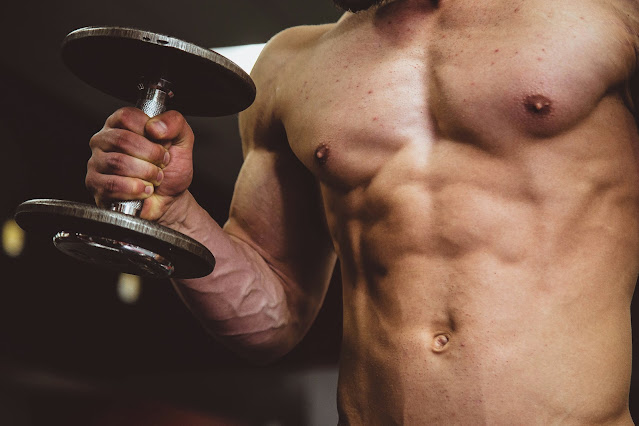Unlocking the Truth: Can Fat Really Turn Into Muscle?
In the realm of fitness and body transformation, the idea of converting fat into muscle is a topic of intrigue and speculation.
Many individuals embarking on their fitness journey wonder if it's possible to shed excess fat while simultaneously gaining lean muscle mass.
Let's delve into this phenomenon and uncover the truth behind whether fat can truly transform into muscle.
Can Fat Really Turn Into Muscle?
Now, the burning question: can fat truly transform into muscle? THE ANWSER IS NO.
Fat and muscle are distinct tissues with different compositions and functions. Fat cells cannot spontaneously morph into muscle fibers, nor can muscle fibers magically convert into fat cells.
However, through strategic lifestyle choices and exercise regimens, it's entirely possible to achieve fat loss and muscle gain simultaneously.
Understanding Fat and Muscle Composition
Before delving into whether fat can morph into muscle, it's essential to comprehend the fundamental differences between these two tissue types.
Fat Tissue
Fat tissue, also known as adipose tissue, is primarily responsible for storing excess energy in the form of triglycerides. This tissue comes in two main types: subcutaneous fat, which lies just beneath the skin, and visceral fat, which surrounds organs within the abdominal cavity.
Muscle Tissue
On the other hand, muscle tissue is composed of muscle fibers that contract to produce movement and support metabolic functions. There are three main types of muscle tissue: skeletal muscle, which facilitates voluntary movement; cardiac muscle, found in the heart; and smooth muscle, found in the walls of internal organs.
The Metabolic Processes: Fat Loss and Muscle Gain
Fat Loss
Fat loss occurs when the body is in a calorie deficit, meaning it consumes fewer calories than it expends. This deficit prompts the body to tap into its fat stores for energy, leading to a reduction in overall body fat percentage.
Muscle Gain
Conversely, muscle gain, or hypertrophy, is stimulated by resistance training and adequate protein intake. During resistance training, microscopic damage occurs to muscle fibers, prompting the body to repair and rebuild them, resulting in increased muscle mass over time.
When you lose weight, what changes?
Losing muscle, fat, and glycogen stores (water weight) is the most common way to lose weight. Fat loss should ideally account for the majority of weight loss.(Source)
Achieving a calorie deficit—either by eating fewer calories than your body requires each day, increasing physical activity to burn calories, or doing both—is necessary to lose weight.
However, if there is an excessive calorie deficit, the body will break down muscle to use as an emergency fuel source, which can result in a rapid loss of muscle mass.
Therefore, it is advised to maintain a moderate deficit of about 500 calories, or 10–20% of your daily caloric requirements.(Source)
Body fat is used as fuel to support the body's normal processes when there is a moderate calorie deficit.
Can Fat Really Turn Into Muscle ?
Here's how to achieve fat loss and muscle growth in a sustainable, healthful manner.
The body has to be in a calorie deficit in order to lose weight. Eating fewer calories, exercising more, or doing both at once can help you reach a calorie deficit.You can reach a calorie deficit without feeling deprived or hungry if you eat a lot of natural, minimally processed foods that are high in fiber, healthy fats, and protein.
Additionally, it's ideal to combine strength and cardiovascular exercises five to seven days a week, such as Pilates, resistance bands, or weightlifting.(Source)
Walking, running, or riding a bike for more than twenty minutes while still being able to speak with little difficulty are examples of moderate-intensity cardio.
Strength exercise, meanwhile, can raise the body's metabolic rate for up to 72 hours while also assisting in the preservation and growth of muscle. This implies that your body will continue to burn more calories even after a successful strength training session.(Source)
Additionally, muscle has a higher metabolic activity than fat, thus having more muscle on your body can assist in weight loss by increasing calorie expenditure.
The body will therefore be assisted in reaching a calorie deficit if these two types of exercise are combined with a diet high in healthy foods and low in processed foods.
The Road to a Leaner, Stronger Physique
Balanced Nutrition
A well-rounded diet rich in lean protein, complex carbohydrates, healthy fats, and essential vitamins and minerals is crucial for supporting both fat loss and muscle gain.
Resistance Training
Incorporating resistance training exercises such as weightlifting, bodyweight exercises, and resistance bands into your fitness routine is essential for stimulating muscle growth and strength development.
Cardiovascular Exercise
While resistance training is paramount for building muscle, incorporating cardiovascular exercise such as running, cycling, or swimming can aid in calorie expenditure and promote overall cardiovascular health.
Ample Rest and Recovery
Ensuring an adequate amount of rest and recovery is vital for muscle repair and growth. Aim for 7-9 hours of quality sleep per night and incorporate rest days into your exercise routine to prevent overtraining and minimize the risk of injury.
Conclusion
While the notion of fat turning into muscle may seem appealing, it's important to understand that this concept is biologically impossible.
However, through a combination of balanced nutrition, resistance training, cardiovascular exercise, and adequate rest, you can achieve a leaner, stronger physique by simultaneously reducing body fat and increasing muscle mass.
Embrace the journey, stay consistent, and remember that sustainable progress takes time and dedication.

